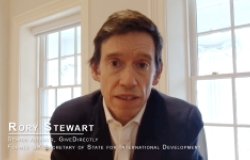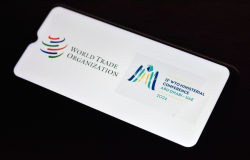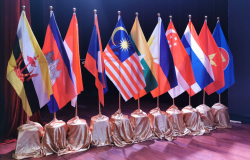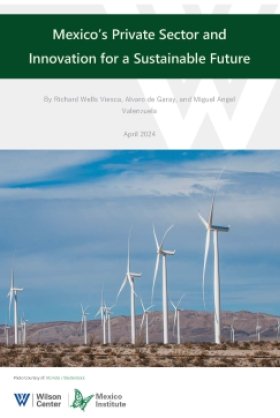Urban Transport Development in China - Trends and Challenges
Lee Schipper and Wei-Shiuen Ng from EMBARQ at the World Resources Institute's Center for Sustainable Transport, and transportation specialist Graham Smith examine China's current motorization trends and their consequences.
Overview
Although China's overall personal vehicle sales and ownership rates are low when compared to the United States, the roads in China's largest cities are already clogged with cars and their emissions are the leading source of urban pollution. The wave of car purchases increases monthly—one recent survey showed that 13 percent of urbanites in Shanghai, Beijing, and Guangdong intend to buy a car within the next 12 months. Lee Schipper and Wei-Shiuen Ng from EMBARQ at the World Resources Institute's Center for Sustainable Transport together with Graham Smith, a transportation specialist who recently retired after 27 years at the World Bank, examined China's current motorization trends and their consequences for access and mobility, air quality, and human health. The three speakers discussed different automobile technologies, alternative fuels, and mobility choices that could help promote more sustainable development in China (see speaker PowerPoint presentations in the See Also box).
China's New Car Culture
To illustrate the current state of China's automobile boom, Smith began his talk by showing a photo of a typical gridlocked street scene with pedestrians, bicycles, and cars battling for space on the road. Beijing alone has experienced a tenfold increase of private cars in the last 10 years, while Shanghai's number of private cars jumped from 10,000 to 250,000 in the last eight years. Nearly every car manufacturer in the world has set up plants in China, courting consumers' hunger for cars. During his most recent visit, Smith attended the biannual Beijing Auto Summit, where throngs of Beijingites ogled some 500 models from 50 different exhibitors. Car shows, duche (clogged roads), and car driving clubs are all signs of China's rapid transformation into a car culture. Some statistics underscoring this trend include:
- China is the world's second largest automobile market and third largest car manufacturer;
- Automobile production rose from 509,000 in 1990 to 4.4 million in 2004;
- Automobile sales in China are expected to reach 7 million in 2006—one-tenth the world's total;
- China's annual private motor vehicle purchases reached 14.83 million in 2004; and
- The total number of motor vehicles on the road increased 290 percent from 1990 to 2000.
This rapid motorization has brought considerable economic development to China, with the automobile sector—as a pillar industry—now comprising 1.5 percent of total GDP. In 2003 alone the sector created 1.6 million jobs. Increased mobility and the access it brings also have led to increased commercial activities and improvements in living standards and social welfare. However, the explosion of car purchases and insufficient city planning and policies have created numerous economic, environmental, and social problems: (1) as traffic congestion grows, the efficiency of the urban economy is stifled; (2) unchecked conversions of farmland for urban development are destroying scarce arable land and displacing farmers (usually with insufficient compensation); (3) excessive investment in roads is placing heavy financial liabilities on cities; (4) rising fuel consumption endangers China's long-term energy security; and (5) urban air quality has dropped precipitously, increasing respiratory problems. While vehicle pollution is an immediate threat to human health in Chinese cities, it also is a major contributor to China's total greenhouse gas emissions, which pose longer-term ecological and economic threats to the country's economy and the health of its citizens.
Shortcomings in Urban Transport Planning
Despite the constant gridlock and smoggy skies, policymakers see the auto industry as key to the economy and are thus unwilling to take steps to slow auto growth. Instead, most major cities in China seem to simply be trying to build their way out of traffic problems—Beijing being the most egregious example, with six ring roads and more being planned. China's current ad hoc approach to transport planning consists of heavy investment in road capacity, local policies to encourage car purchases, uncoordinated efforts in bus rapid transport and mass transit, and ambitious, but not yet fully enforced, car taxes and fuel efficiency standards. These sometimes contradictory measures have done little to help stymie traffic flow or pollution. Ultimately there may be no winners in the current poorly managed transport sector. Drivers are stuck in traffic jams and find parking difficult; moreover, the urban poor—particularly migrant workers—are taking the brunt of the road-building development as bicycle lanes and sidewalks are eliminated. Statistics on traffic fatalities rose 243 percent from 1975 to 1998, with pedestrians and bicyclists making up more than half of the victims.
Another major shortcoming in the urban transport sector is that municipal plans rarely consider how land-use changes will affect future development, which highlights the urgent need to train and build capacity among China's urban planners. Graham recalled a situation in which he was presented with a city plan. When he asked where the new residential areas would be in comparison to the new areas of employment, he was met with blank stares.
In another case, Schipper related how Chongqing officials are planning a subway system and have estimated they can build the infrastructure at $50 per centimeter—an unrealistically low estimate considering the global average is approximately $1,000 per centimeter and only Hong Kong's subway system ever fully recovered its operating and capital costs. Generally, larger Chinese cities have been able to mobilize considerable resources for urban infrastructure, largely by borrowing from multilateral banks, which has given organizations such as the World Bank an opportunity to provide advice on best practices and mistakes that have been made elsewhere in the world.
Weak Environmental Governance
Each speaker noted how the highly decentralized political system in China has rendered many national transportation, urban development, and pollution control policies ineffective. Many provincial and municipal governments have used road building and growth of the auto sector to promote economic growth and therefore ignore central measures to place limits on auto sales and emissions. Land has become a major source of income for both rich and poor Chinese cities. Thus, throughout China, cities of all sizes reclassify agricultural land for urban development and lease it out, making considerable income on road building and tolls. Land grabs for urbanization have become a major distorting driver of municipal finance and have caused considerable protests at the local level as farmers or poor urbanites lose land and homes with little compensation. Protests over road building have become particularly violent in southern China, where farmers are aware how new roads bring more factories, which ultimately contaminate water and soil.
Schipper stressed the need to set up a new system to push local officials to become accountable for the social and environmental problems created by urban planning. Ideally, the Chinese government needs to revisit the now failed attempt at establishing a green GDP system and create a new system to evaluate the performance of local officials on their urban planning. Both Ng and Schipper also highlighted the need to establish more transparency and public participation in transport decision-making, which could help create a more coherent transport strategy.
Opportunities for Better Urban Transport
The top leadership's recent slogans on promoting a more "people-centered" development marks a positive sign toward greater stakeholder participation in government decision-making. Another positive trend regarding the auto sector has been the government's decision to adopt the European standards of measuring fuel efficiency; Beijing has already adopted the EURO III for new cars entering the market and the rest of country is expected to follow by 2007. Some of the policies that EMBARQ suggested needed extra attention in the short term include: (1) the promotion of clean and efficient mass transit systems, (2) greater enforcement of vehicle emissions standards and traffic laws, and (3) stricter safety regulations. In the long term a major reworking of fiscal policies, fuel quality regulations, vehicle emission controls, fuel economy standards, and the supported development and use of alternative fuel and vehicle technologies will be required. Various policy tools are being debated in China to promote growth in cleaner cars—such as fuel demand management via taxation based on fuel economy—and slowing car ownership (e.g., quotas). However, overcoming local government intransigence on all of these policies will be key, which is why many of the international programs focused on urban transport in China have been set up at the municipal level. There is a vast amount of information and support available to the Chinese leadership, urban planners, and citizens in the area of sustainable transport:
- China is the number one recipient of environmental loans from the World Bank, part of which include a focus on urban transport;
- The U.S.-based Energy Foundation's transport program has promoted transportation research and policy work in China—most notably supporting BRT pilot projects in more than 15 cities;
- World Resources Institute's EMBARQ, with support from Shell Oil, has set up a sustainable transport center in Shanghai; and
- The European Union and the U.S. EPA both have their own bilateral dialogues with China on fuel standards, emission control technology, and monitoring.
Schipper pointed out that although China's statistics on the environment are dire, when broken down, they do not compare to American pollution from the auto sector. For example, China may surpass the United States in terms of CO2 emissions by 2009, but not on a per-capita basis. China is also twice as motorized than the United States was at the same level of wealth, which led Schipper to comment, "in a funny way, China is 90 years ahead of us." At the moment, China is following South Korea's development track on auto growth, which Schipper feels China cannot afford to do. Although vehicle growth is increasing rapidly, the government has a huge number of options it could take at this juncture and still has the ability to change their path towards one of sustainable urban transport. For example, the United States has a deeply ingrained fossil fuel-based infrastructure that would be extremely costly to replace. China has not yet built millions of gas stations across the country, which offers the leadership an opportunity to think creatively before making the same mistake of creating an overly car-dependent society.
Drafted by Juli S. Kim and Jennifer L. Turner.
NOTES BOX
1 A growing number of Chinese and international studies show that China's economy could be seriously impacted by rises in sea level, decreases in output of agriculture and aquaculture, and in melting of glaciers (which has already begun) in the northwestern regions of the country (see the Stern Review on the Economics of Climate Change and Civic Exchange's Impacts of Climate Change in Hong Kong and the Pearl River Delta).
Speakers
Hosted By

China Environment Forum
Since 1997, the China Environment Forum's mission has been to forge US-China cooperation on energy, environment, and sustainable development challenges. We play a unique nonpartisan role in creating multi-stakeholder dialogues around these issues. Read more

Environmental Change and Security Program
The Environmental Change and Security Program (ECSP) explores the connections between environmental change, health, and population dynamics and their links to conflict, human insecurity, and foreign policy. Read more
Thank you for your interest in this event. Please send any feedback or questions to our Events staff.










